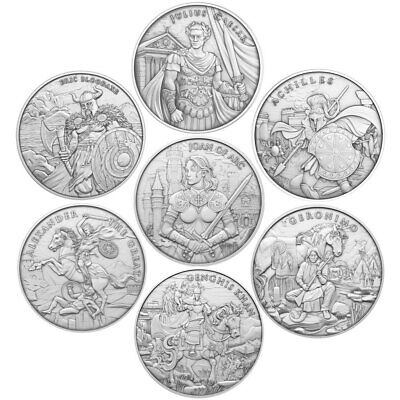In economic uncertainty, investors often turn to precious metals as security. Silver and gold have been a popular choice for those seeking a hedge against economic downturns. But is silver truly a safe haven? This article explores silver’s role as a long-term store of value, its relationship with inflation, and historical perspectives on its value relative to gold.

Silver as a Long-Term Store of Value
Silver has been used as a form of currency and a store of value for thousands of years. Unlike paper currency, which governments can print at will, silver’s supply is limited to what can be mined from the earth. This intrinsic scarcity contributes to its potential as a long-term store of value.
Over the decades, silver has maintained its purchasing power, even as fiat currencies have experienced inflationary pressures. This characteristic makes it attractive to investors looking to preserve their wealth over the long term. While it may not offer the same level of security as gold, silver’s utility in various industrial applications adds an additional layer of demand that can support its value.
The Impact of Inflation on Silver Prices
Inflation is one of the critical factors affecting the prices of commodities, including silver. As currency’s value decreases, the prices of goods and services tend to rise. Since precious metals are priced globally in U.S. dollars, a decrease in the dollar’s value typically increases the value of metals like silver.
- When inflation rises, money’s purchasing power falls, prompting investors to seek assets that can preserve their wealth.
- Silver, a tangible asset, is perceived as a hedge against inflation.
- Historically, periods of high inflation have corresponded with rising silver prices.
For example, during the inflationary period of the 1970s, silver prices surged as investors sought refuge from the declining dollar. In more recent years, concerns over monetary policy and fiscal stimulus have led to renewed interest in silver as a protective asset.
The Dollar’s Influence on Silver Prices
Since silver is priced globally in dollars, fluctuations in the dollar’s value have a direct impact on silver prices. A weaker dollar makes silver cheaper for foreign investors, increasing demand and prices. Conversely, a stronger dollar can lead to lower silver prices.
The relationship between the dollar and silver is a critical factor that investors must consider when evaluating silver as an investment. By understanding this dynamic, investors can make more informed decisions about when to buy or sell silver in response to currency trends.
Historical Gold-to-Silver Ratio
The gold-to-silver ratio is a valuable tool for assessing the relative value of these two precious metals. Historically, this ratio has varied widely, reflecting changes in market conditions and investor sentiment.
YearGold to Silver Ratio
Pre-1933 Approximately 16:1
2023 Approximately 80:1
Before the confiscation of gold in 1933, the gold-to-silver ratio was approximately 16:1. This meant that it took 16 ounces of silver to purchase one ounce of gold. At that time, a $20 gold coin was worth the same as a $20 Federal Reserve Note. Today, however, a $20 gold coin is valued at over $2,700 due to the increase in the gold price. This dramatic change highlights how gold and silver have appreciated against the dollar over the long term, though gold has outpaced silver significantly.
For more information on the historical gold-to-silver ratios, you can visit Investopedia.
Conclusion
Silver’s role in an economic downturn is multifaceted. As a long-term store of value, it offers a hedge against inflation and currency devaluation. Its historical performance relative to gold and its utility in various industries add to its appeal. However, like any investment, silver comes with its risks and uncertainties.
Investors considering silver a safe haven should weigh its benefits against its volatility and market dynamics. Investors can better navigate the precious metals market in times of economic turmoil by understanding the factors that influence silver prices, such as inflation and the dollar’s strength.
For further reading on investing in silver, you may refer to Kitco.